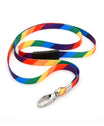Welcome, stay-at-home moms! As the heart of the family and the keepers of our homes, we understand the weight of responsibility you bear to ensure the safety and well-being of your loved ones. Whether it's making your home safe for your children, ensuring the comfort of the elderly, or protecting the family from potential security threats, your role is paramount. But don't fret! This comprehensive guide will reveal a series of measures you can take to enhance your family's safety, reinforce your home against potential hazards, and even look after your personal well-being, from simple security installations to maintaining a healthy lifestyle. Let's empower you to protect your family better, foster a robust home environment, and give you peace of mind. Let's take this journey towards a safer home...together!
Securing your home is not only about protecting physical assets—it's about maintaining a life of peace and safety for you and your loved ones. Home safety is imperative, given the unfortunate rise in crimes committed against residential properties. But, how do we ensure to ward off potential threats effectively? This comprehensive guide entails four main areas of focus: installations of security systems, leveraging smart home technology, ensuring online safety, and monitoring access controls.
Installations of Security Systems
Remember the old saying, "it's better to be safe than sorry"? This rings especially true when it comes to securing your home. From video surveillance systems to video doorbells and alarms—one should leave no stone unturned.
A smart move is to initiate these installations for reliable security measures. By installing a well-strategized security system, you not only add a sturdy layer of protection to your home but also deter opportunistic thieves. An intriguing sidenote is that you should activate your home security system whenever you leave home—even it is for running simple errands or dropping your kids off at school.
Smart Home Technology
With the integration of technology into daily life, home security systems have become smarter and more intuitive. Advanced systems provide real-time security updates on your smart devices, and some even enable you to interact with visitors, without actually opening your door.
Smart home technology isn't just about fancy equipment and robots performing human chores, it's an effective safety measure. Investing in smart tech is a proactive approach to home security, a cornerstone for ensuring a secure living environment.
Online Safety Measures
As much as physical security matters, we can't afford to brush aside online safety. With the increasing proliferation of digital systems, cyberattacks are also on the rise. Especially, the home-based devices that are a part of the Internet of Things (IoT) network are often targets, necessitating strong cybersecurity measures.
So, be sure to keep your computers, smartphones, and tablets in common areas of the house. This way, it's easier to keep tabs on their usage and enforce online safety rules efficiently, especially for your younger family members.
Monitoring Access Controls
The last, but certainly not the least, component of optimal home safety is controlling and monitoring access. Whether it's a babysitter, plumber, or even a close friend - you need to be careful about who you grant access to your home.
Devices like smart locks can always ensure that your house is locked and secure, even when you're miles away. Incorporate systems that send you alerts the moment someone enters or leaves your property. With proper access control measures, you can ensure a safer dwelling with reduced odds of burglaries and intrusions.
Remember, peace of mind is priceless, and so is the safety of people and assets you care most about. Enhancing home security might cost you a bit in the beginning but considering its benefits, it is undoubtedly a wise and worthy investment. By diligently applying the measures outlined in this article, you can take an important step toward ensuring a safer, more secure home.
When we talk about personal empowerment and well-being, we often picture someone meditating in the middle of a serene forest or spending peaceful hours at a wellness retreat. While these images indeed depict facets of well-being, it's crucial to understand that the paradigm of personal empowerment extends much further. Here, we will delve into vital areas such as self-defense strategies, the significance of routine and self-care, the impact of nutrition and exercise on our lives, and why active recuperation is beneficial for your holistic wellness.
Self-Defense Strategies
A solid foundation of self-defense can be a significant boost to personal empowerment. Such strategies empower people – children, women, or the elderly – to protect themselves. Learning these strategies equips us with the confidence and proficiency to ensure our family's safety. From simple evasion techniques to more comprehensive martial arts practices, having an array of self-defense tactics in your arsenal is a surefire way to bolster your sense of security and empowerment.
Routine and Self-Care
Taking care of yourself goes much beyond the realm of physical wellness. Having a routine with time set aside for self-care is an investment in your overall well-being. It could be indulging in a hobby, taking a bubble bath, reading a book, or even simply losing yourself in the melodies of your favorite music. Remember, it's necessary to prioritize your needs, desires, and ambitions over everything else sometimes. Taking care of number one - you - will give you both the physical vitality and emotional resilience to take on any challenge life throws at you.
Nutrition and Exercise
Although often neglected, nutrition and exercise constitute two of the most critical pillars of personal empowerment. Consistently nourishing your body with balanced, nutritious meals and maintaining a regular exercise routine can make a world of difference in how you feel physically and mentally. It not only helps to maintain a healthy body weight but also improves overall mood, sleep patterns, and energy levels. Remember, you are what you eat, and staying active is the key to unlocking a better version of yourself.
Active Recuperation
Last but not least, let's talk about active recuperation. With the constant hustle and pressures of life, we might sometimes feel chained to our responsibilities, especially if we're parenting or managing a demanding work schedule. However, it's necessary to take some "me" time and step away from your normal environment occasionally. Engaging in activities outside your house, like going to the spa, taking a mini vacation, or even just a leisurely nature walk, could be just what your psyche needs to recharge and reclaim focus and enthusiasm.
Our holistic personal empowerment and well-being hinge on how well we can balance these elements. Creating a life that honors our physical health, emotional welfare, and personal interests isn't an indulgence – it's our right. Let's make it a priority.
Safety begins in the most intimate places of our lives—our homes. Guiding young minds to develop a sense of caution, awareness, and independence is a timeless duty of parenthood. Overseeing children's safety involves a proactive approach that ranges from setting clear rules to conducting childproofing measures at home. Let's take a deeper look into each aspect of children's safety measures.
Setting Rules for Children
It's crucial to understand that safety rules aren't imposed restrictions, but they are clear guidelines that shields our children from potential risks. Some of these quintessential rules include:
- insisting on holding hands while crossing the road,
- reminding to look both ways before crossing any street,
- asking them to stay inside the car until an adult comes to get them.
Instilling such habits at an early age significantly improves their alertness and safety consciousness. These rules help children to understand boundaries and instill in them the knowledge to approach any situation with an understanding of risk.
Ensuring Home Safety
Creating a child-friendly environment extends beyond the realms of their playroom. Home is where children explore and grow; therefore, it must be a place that nurtures their curiosity without exposing them to unnecessary risks. Some key aspects of ensuring home safety include:
- Installing safety gates to prevent unsupervised access to potentially dangerous areas,
- Setting up window guards to avert any accidental falls,
- Using cabinet latches to keep cleaning supplies or medicines out of children's reach.
By incorporating these measures, you transform your home into a safe haven for your little ones.
Coaching Child Safety Measures
Equipping children with essential safety knowledge isn't just confined to protective measures around the home or setting rules. It also involves coaching them on self-protection and emergency preparedness. Teaching children crucial details like their last name, home address, and instructing how to dial 911 in case of an emergency is of significant importance.
Remember, as parents, the goal is to instill confidence, not fear. These measures provide children with a sense of security and control, allowing them to navigate through life's uncertainties with ease and assurance. By balancing protective measures with effective coaching, you're not just safeguarding your children, but also enabling them to grow into responsible, safety-conscious individuals.
Remember that when it comes to children's safety, proactive and holistic approach are key. It's about setting a solid safety foundation for them to build their lives upon. After all, happy and safe childhoods make way for resilient adults of the future.
Planning for Retirement Home Living
Retirement often brings with it the need to reassess our living situation. As we age, our needs change, and our homes often need to adapt to meet these new requirements. If you're considering retirement home living, there's no need to worry - in fact, specifically designed retiree homes come with several built-in advantages.
Firstly, such homes are usually designed with efficiency and accessibility in mind, making daily chores and activities easier. They may also be situated within a community of other seniors, providing social opportunities and shared resources. But perhaps most essential, these retirement homes are usually equipped with a range of safety measures designed to prevent accidents and facilitate comfortable living.
Installing Safety Fixes
Even if you're not transitioning to a retirement home, there are several home safety measures worth considering. Many common household accidents can be prevented through simple measures that enhance the safety of your home.
- Non-Slip Measures: One of the most straightforward measures is ensuring your home surfaces are slip-free. Installation of non-slip strips on stairs, using non-slip wax on floors, and even placing waterproof seats or chairs in the bathroom can prevent slip-and-fall accidents.
- Grab Bars: Installing grab bars in your bathroom or any other area where foot traffic may be precarious can provide the necessary support when it's needed most.
- Mobility Accommodations: If mobility is becoming challenging, considering accommodations such as ramps instead of stairs or broader doorways for wheelchair access can significantly improve quality of life. Investing in mobility aids, like walkers or scooters, can also enhance independence.
Remember, the goal of these adjustments isn't to restrict your lifestyle but to make living in your home as comfortable, safe, and enjoyable as possible. Aging is an inevitable part of life, but it doesn't mean we can't adapt our environments to ensure we're living our best life, every step of the way.
In today's digital age, the paramount importance of internet safety and privacy cannot be overstated. Your screen may be shielding you from the outer world, but the internet isn't all cyberspace. It's more real than you might imagine, making it essential to arm oneself with knowledge and precautions to navigate this vast virtual terrain securely. Specifically, stay-at-home moms – often unsuspecting targets of cyber scams – must be extra cautious about the kind of information they share online.
Internet and Computer Literacy
Internet and computer literacy is not just about understanding the basics of operation and navigation. It extends to uncovering the nuances of the online world, identifying potential threats, and taking appropriate measures.
- Knowledge Is Power: The more comfortable you become with your device and the internet, the more you understand its potential threats. Regularly update your knowledge on the latest cybercrimes and scams.
- Recognize the Signs: Phishing attacks often come dressed as a credible source. Learning to identify these disguised threats is crucial.
A well-informed user can discern the red flags, even in highly sophisticated trickeries. It's wise to keep in mind that when it comes to internet safety, prevention is the best defense.
Securing Personal Information
Securing personal information, sensitive data, and creating backups are essential ingredients in your privacy recipe. Here’s how you can start doing it right away:
- Strong Passwords: Create complex and unique passwords for all your online accounts. Use a combination of letters, numbers, and symbols that don't constitute any recognizable words or dates.
- Data Encryption: Encrypting your data adds an extra layer of security where, even if hacked, the information isn't comprehensible to the intruder.
- Prudent Sharing: Be cautious while sharing information online. If it doesn't feel right, trust your gut – it probably isn't.
Simply put, do not offer cybercriminals the keys to your private information by leaving your data unprotected or sharing it recklessly. Remember, you hold the primary role in managing your internet safety and privacy.
Arming yourself with appropriate knowledge and skills is as much about self-defense as locking your house at night. Your awareness and proactive actions are your best protection in the digital landscape. Protecting one's personal information feels like a constant uphill battle in our information-era, but it's a battle worth fighting every day.
In our upcoming section, we will delve further into data backup strategies – a significant aspect of your digital safety plan.
Saying "bye" to your home-based workstation and waving "hello" again to office cubicles can feel like a significant shift. Thankfully, adequate workforce reentry preparation can make the transition smoother and less stressful. In this process, one quintessential element cannot be underestimated - the power of an up-to-date resume.
Keeping Up-to-date Resumes
Let's talk about your resume, your professional storybook. Its objective? To introduce yourself to potential employers and demonstrate the skills and experiences you've amassed over the years. But remember, if you're a stay-at-home mom preparing for a comeback, there's an important detail not to overlook: updating your resume with skills acquired during your stay-at-home period.
Here's why it matters:
- Skill Tracking: Running a household is not much different from managing a business. You plan, budget, schedule, and negotiate regularly. These skills are valuable in the workspace and can be packaged attractively in your resume.
- Compensation Checkpoint: Consider this - the average annual value of a stay-at-home parent is estimated to be $178,201. While you may not be expecting a paycheck quite so extravagant, negotiating your worth using this number might yield a pleasant surprise.
- Conviction and Confidence: When an employer realizes that you recognize and value the skills your non-traditional work background brings, you position yourself as a confident and self-aware candidate—a winning combination.
"Reentering the workforce should not be a downward step, but a leap forward. By showcasing transferable home management skills on your resume, you signal to potential employers that you indeed offer something unique."
Power up your reentry in the most confident way. And remember, every experience, traditional or not, brings with it a basket of skills that are valuable in the workplace. So, cast off any doubts, prep that resume and stride back into the business world with confidence and poise. You've got this!
There is a common phrase, "It takes a village to raise a child," but have you ever stopped to think about the implications of this saying? More than just dotting on our little ones, this phrase emphasizes the role of our environment in shaping not only our lives, but those of future generations as well. Now, this environment comprises of various elements, but one of the most foundational and influential ones is our 'Neighborhood and Community.'
Community Orientation
Before one can make meaningful contributions to their community, they must first understand their surroundings. This is where community orientation comes into play. By being in tune with the local happenings, knowing your neighbors, and being familiar with the various services available within your community, you empower yourself with knowledge. Knowledge that can not only improve your way of life but can also come in handy during times of crisis.
Being aware of your neighborhood and community surroundings isn't just about memorizing the names of the streets or the houses. It's about understanding the broad structure, knowing where the closest hospital is or where the fire department is located. It's about knowing who to contact in case of an emergency or disaster, and having a well laid out plan on how to exit your neighborhood safely in case of emergencies.
Moreover, it's about realizing that your neighborhood isn't just a collection of houses or buildings. It's a vibrant eco-system with children playing in parks, community initiatives taking place, neighborhood meetings, cultural festivals, and so much more. It's this diversity and vibrancy that make a community so special.
And the first step into becoming a proactive member of this eco-system is by being aware. Aware of your surroundings, aware of the resources at your disposal, and aware of your neighbors who are, after all, your extended family.
With this awareness, you can readily use this rich tapestry of culture, resources, and people in times of need, and also enhance them in times of prosperity. So, invest your time and effort in understanding your community. You never know when the knowledge may come to your aid or how it can help you make a positive difference in someone else's life.
Your home is not merely an observer of your life; it is an active participant that offers shelter, comfort, and protection. Being a stay-at-home mom means spending a great deal of time within your home’s four walls. It is essential that you make it a sanctuary, safe and secure for every family member.
From setting up an effective home security system, to establishing rules for children's safety and training yourself in self-defense strategies; no stone should be left unturned in striving for ultimate household safety. These efforts don't merely safeguard our loved ones and belongings. They also provide exceptional peace of mind, which is a sanctuary within itself.
Moreover, the world is evolving, and technology continues its rapid advancement. The digital realm seeps into our homes, interweaving with our daily lives. Harnessing these technological advancements, such as smart home enhancements and online safety measures, will be of prime importance in maintaining a secure home environment, now and in the future.
Our elderly family members have special needs that require attention. As caregivers, it is our responsibility to create an environment where they can age gracefully and safely, whether it's planning for retirement home living or installing safety measures in our homes for them.
Additionally, as a stay-at-home mom, it is paramount to remember that while you are the protector of your home and family, it's equally important to focus on personal enrichment and empowerment. Be it by indulging in some self-care, following a nutritional diet and regular exercise, or preparing for a workforce reentry.
Lastly, knowing your neighborhood, being aware of your surroundings, and fostering a sense of community can go a long way in enhancing your family's safety and well-being, in addition to your own. After all, it's rightly said, "it takes a village to raise a child." Each step taken, however small, leads us closer towards a safer, more secure environment for us and our loved ones.
So, stay vigilant, stay prosperous, and above all, stay safe. Your fortress waits, and it is you who holds the key to its defenses.
Frequently Asked Questions
-
What are some personal safety measures stay-at-home moms can take to protect their family?
Stay-at-home moms can take several personal safety measures to protect their family, such as: 1. Install a security system, 2. Create a safety plan, 3. Keep doors and windows locked, 4. Teach children about stranger danger, and 5. Practice self-defense techniques.
-
Is it necessary to have a security system in place for personal safety at home?
Having a security system can greatly enhance personal safety at home. It provides an added layer of protection by deterring potential intruders, alerting homeowners and authorities in case of a breach, and offering peace of mind knowing that the house is monitored 24/7.
-
What should be included in a family safety plan?
A family safety plan should include emergency contact information, a designated meeting place in case of evacuation, instructions on what to do in case of a fire or natural disaster, and guidelines for online safety and stranger awareness.
-
How can stay-at-home moms teach their children about stranger danger?
Stay-at-home moms can teach their children about stranger danger by discussing the concept of strangers, explaining the importance of not talking to or accepting anything from strangers, establishing safe zones like the front porch or a neighbor's house, and role-playing different scenarios.
-
Are self-defense techniques necessary for stay-at-home moms?
Self-defense techniques can be beneficial for stay-at-home moms as they provide the skills and confidence needed to protect themselves and their family in case of an emergency or threat. Learning basic self-defense moves can empower moms and help them feel more secure.
















Leave a comment
This site is protected by hCaptcha and the hCaptcha Privacy Policy and Terms of Service apply.